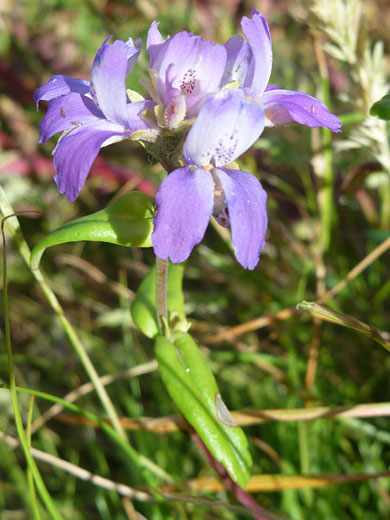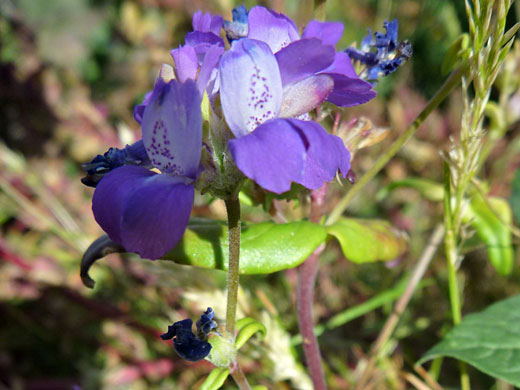
Flowers of collinsia concolor, starting to wither - in Tubb Canyon, Anza Borrego Desert State Park, California
Common name:
Chinese houses
Family:
Scientific name:
Collinsia concolor
Main flower color:
Range:
South California
Height:
Up to 18 inches
Habitat:
Chaparral, woodland openings, streamsides
Leaves:
Opposite, oblong to lanceolate; hairless, with entire edges, up to 3 inches long
Season:
March to June
Collinsia concolor has a limited distribution in south California, across the Peninsula ranges to the Anza Borrego area, and on the lower slopes of the San Bernardino Mountains. The inflorescence is produced along the uppermost few inches of the upright stem, in little, slightly separated groups of whorled flowers (typically 4 or 5 heads), growing from hairy bracts. Flowers consist of a five-lobed calyx, and a corolla that opens into two lips, the upper two-lobed, pale purple in color (with dark dots at the center) and the lower three lobed, colored darker purple. The two lower side lobes are spreading, while the middle forms a keel (hairy at the tip), and encloses the style and stamens. Flowers become blue as they wither.
All Contents © Copyright The American Southwest | Comments and Questions | Contribute | Site Map


